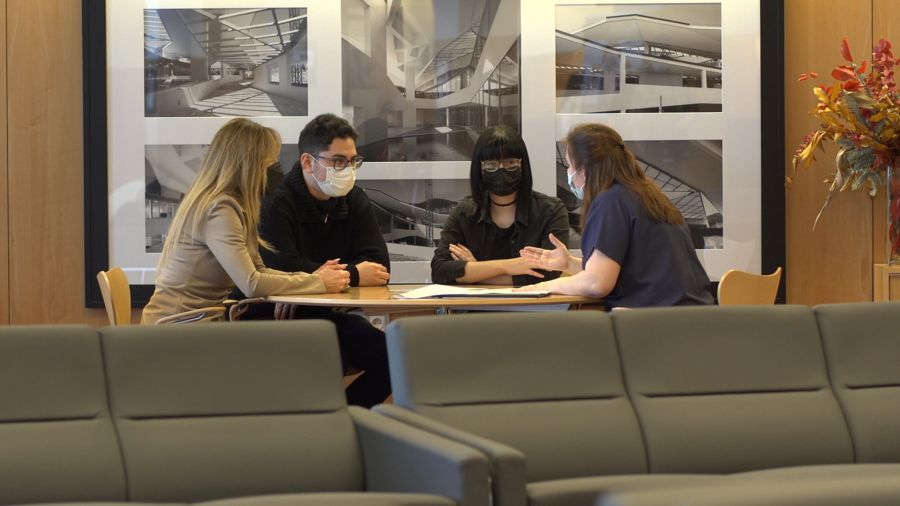
Genetic diagnosis makes it possible to name “rare” vision diseases
Inherited retinal dystrophies can be confused with one another, but, thanks to genetic diagnosis, it is possible to identify their specific causes, predict their evolution and get patients ready for gene and cell therapies.
Diego and Ivanna’s mother began to suspect that her teenagers’ vision problems were not just a matter of glasses. After intensively looking for information and visiting several centres, they came to IMO Grupo Miranza, where they confirmed that they were suffering from a “rare” vision disease: retinal dystrophy. Specifically, everything suggested that they had Stargardt’s disease, a type of retinal dystrophy that affects the macula or centre of vision. However, when a genetic study was carried out to identify the exact cause of the disease, i.e. which gene was involved in the family and which mutation was responsible, they obtained a surprising result..
A complex case of genetic diagnosis
As Dr Esther Pomares, the coordinator of Miranza’s Genetics Department, explains, “we analysed the ABCA4 gene, a very large gene that is mainly associated with Stargardt’s disease, and we found a variant both siblings shared. However, we needed to find a second variant, since, as it is a recessive inheritance, it is necessary for each parent to contribute a mutation.”
An IMO Foundation research project to analyse the ABCA4 gene in greater depth in order to identify even the strangest mutations, offered a new opportunity to locate this variant that had resisted and remained undetected. Eventually, “extending the genetic diagnosis to other genes, which were involved in other retinal dystrophies, allowed us to shed light on the case and find two alterations in the PROM1 gene.” This is how Diego and Ivanna were able to find out that they did not really have Stargardt’s disease, but rather cone dystrophy, which also affects the macula and can therefore have very similar symptoms.

Hope for rare diseases
The confirmation of a genetic diagnosis is not only very important on a medical and scientific level, but also in psychological and emotional terms. Diego and Ivanna stress that “it gives you certainty about what you actually have and more clues as to how it can evolve. Furthermore, it represents hope, because this is what will allow us or other affected people to be eligible for future treatments.” In this regard, Dr Pomares explains that “gene and cell therapies are getting more and more common and, in order to apply them, it is essential to have previously identified the causal gene.”
This is a great opportunity not only for patients at IMO Grupo Miranza, but also for all the Group’s centres, which already feature this pioneering service in Spain.
“You are always your best bet”
While new treatments for retinal dystrophies are being developed, in whose research projects Miranza’s R&D Area is also involved, there are low vision aids that can make patients’ everyday life easier. Ivanna, for instance, explains that she uses magnifying glasses and other technological aids to study and that she is now able to do what she wants.
Furthermore, neither of the two siblings ever forgets their sunglasses with special filters, as light is especially uncomfortable for this type of retinal dystrophy. It also makes it difficult for them to see well at night or to distinguish certain colours, along with a gradual loss of vision that may be more pronounced at some stages or progress more slowly in others.
They adapt to this with the support of their family and the team of ophthalmologists, optometrists and geneticists. Be it as it may, Diego is sure about one thing: “You are always your best bet.” His and Ivanna’s experience has shown him that “if you want to do something, you will be able to do so, no matter how many disadvantages you have over other people, in this case, due to an illness.”